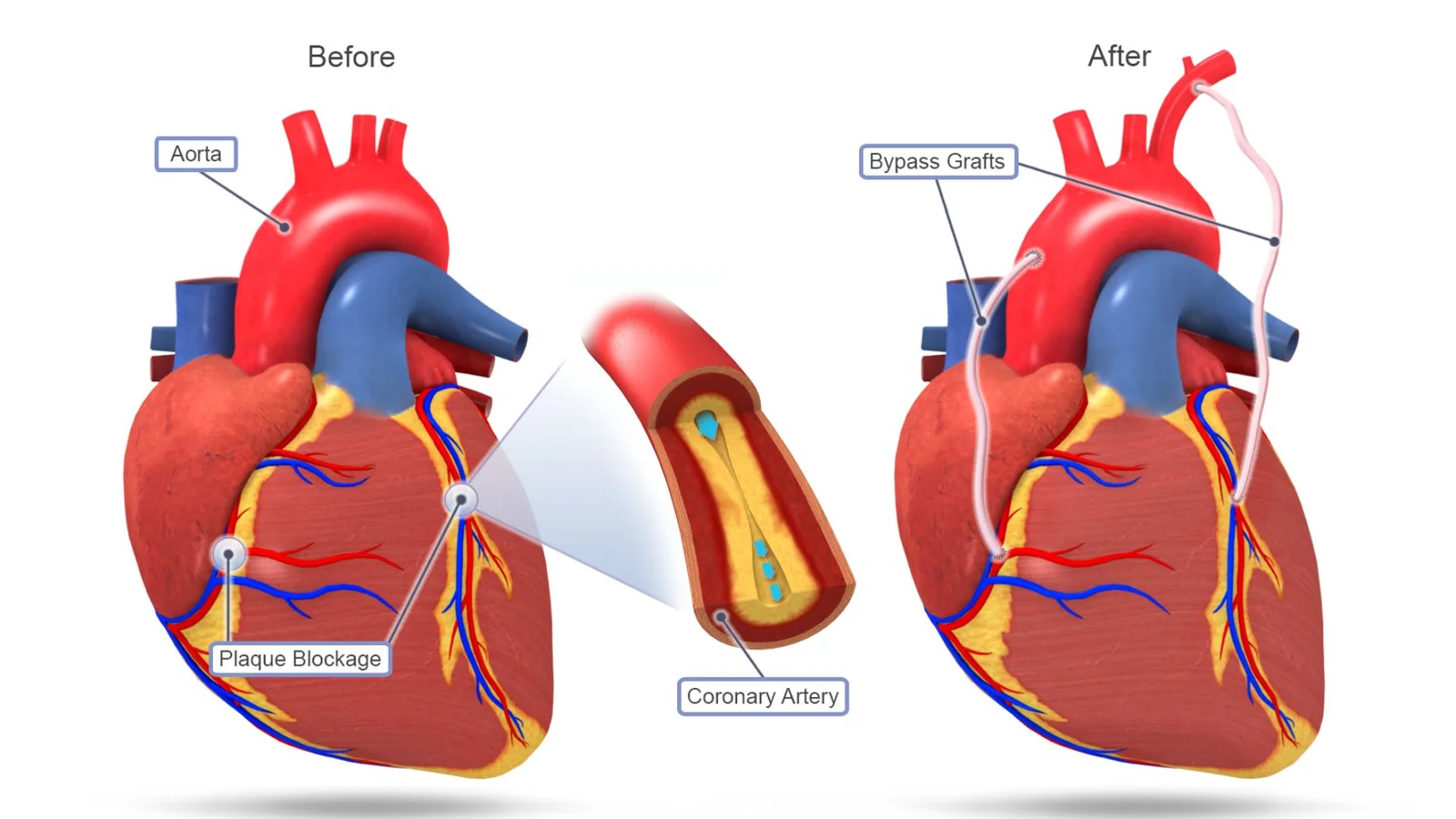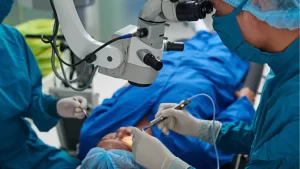
Coronary Artery Bypass Surgery
Coronary Artery Bypass Surgery (CABG) can unclog blocked coronary arteries by taking healthy blood vessels from elsewhere in your body – for instance a vein in your chest, arm, or leg – and connecting them directly to a blocked coronary artery, diverting oxygen-rich blood around it to supply your heart muscle with fresh oxygen-rich oxygenated blood.
Your doctor may also perform angioplasty and/or implant a drug-eluting stent to keep the artery open.
How It Works
Doctors use healthy blood vessels called grafts during an operation to bypass blocked or diseased portions of your coronary arteries that provide oxygen to your heart muscle. Grafts may come from legs, chests or other parts of the body.
Before surgery begins, you’ll be administered medication to temporarily stop your heart from beating. Doctors then make an incision through your breastbone to access your heart; additionally they may connect you to a heart-lung machine which adds oxygen into your blood and pumps it around while keeping your heart still.
Your surgeon will harvest target graft vessels from either your leg or arm and prepare them for insertion into the coronary artery. They then sew each end over an opening created in the aorta before closing your chest with small wires similar to those used when fixing broken bones. As blood runs through them, your doctor checks that they’re working correctly – with you being monitored closely while they do their work!
Preparation
Your doctor will give you specific instructions regarding food and medication intake prior to surgery, as well as suggesting activities which could make you dizzy or lead to loss of balance. They may suggest stopping certain activities that could make dizziness worse or pose other hazards.
Once surgery has taken place, you may require up to two days in hospital recuperation time. Therefore, make arrangements for someone to drive you home as well as having something entertaining like books, word puzzles or music ready.
Once surgery begins, medication will be given to put you into a deep sleep before the surgeon makes an incision in your chest and inserts a bypass graft from one blood vessel – usually your internal mammary artery but sometimes another one within your body – into an existing vein in order to bypass an obstructed coronary artery. One end will attach directly to your aorta while the other end connects directly with blocked coronary arteries.
During the Surgery
At our hospital, we use drugs to stop your heartbeat during surgery and may connect you to a heart-lung bypass machine. Your surgeon makes an incision in your chest, removes any blocked or narrowed arteries and stitches a blood vessel (known as a graft ) from another part of your body to the blocked one – redirecting oxygen-rich blood around any blockages for improved cardiac oxygen supply.
Dependent upon your condition, we may use small incisions and surgical robots during the procedure to hasten recovery time. We can harvest an artery from within your chest (the internal mammary artery), arm, leg or even on the other side of your chest for harvesting purposes.
After your procedure, you will be moved into an intensive care unit until you are deemed stable enough for discharge. During this timeframe, it is important that you adhere to any recommendations from your physician regarding diet and activity – including medications or programs of cardiac rehabilitation – provided by them.
Post-Operative Care
After surgery, you will receive instructions and medications from healthcare providers regarding wound care and medications for pain management. These may include short-term oral painkillers. If you use a pain pump, be sure to push a button at regular intervals in order to receive the correct dosage of medicine from it; and contact your nurse if the discomfort is still not managed appropriately.
Some individuals experiencing post-surgery may experience chest pain or discomfort when exerting themselves or attempting to climb stairs, though this should subside with time. It could be related to changes in how their heart beats or the use of a heart valve during surgery; the symptoms will usually resolve themselves over time.
After hospital discharge, some individuals may be required to participate in a cardiac rehabilitation program designed to aid recovery from surgery, resume daily activities, and reduce future heart issues. These programmes typically last six weeks.



Average Rating